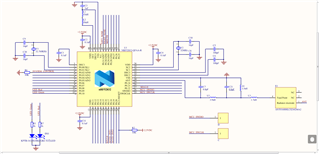Hi,everybody!
I use nRF52832,supply volt 3.0V normal,program can be downloaded , run and debug,i ensure the program is accurately.To control a gpio P0.09,on the hardware, P0.09 series a resistor to the led and the led is grounded,in the program I set P0.09 to high level.The led doesn't light up after the program is downloaded,but the bluetooth program normal works.Why? TKS.


